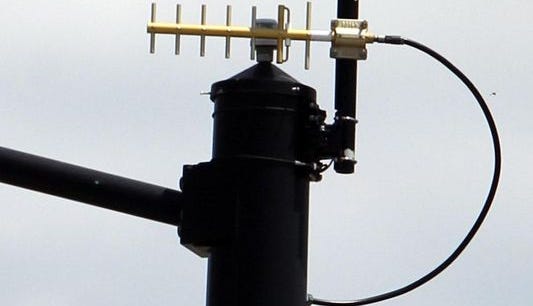In case you? ve at any time strolled by way of a community, you may have got spotted small tiny 5G cell may be on street light source poles. These appear like small boxes, but they? lso are really transmitting cordless signals from cellular carriers to the phone.
These small, purpose-built cell towers are replacing greater, purpose-built ones. Whilst less obvious, they may nevertheless create issues for individuals.
Typically the FCC? s The radiation Exposure Thresholds
Typically the Radiation Exposure Thresholds of the FCC establish the risk-free distance from which in turn a person can be exposed to electromagnetic radiation from wireless devices. The publicity limitations are established on scientific data indicating that RF energy may get hazardous to individuals health.
The specific absorption rate (SAR) quantifies the radiofrequency vitality absorbed by tissues. It is typically 1. 6 watts per kilogram, averaged across one g of tissue.
Nevertheless, since 5g transmits at higher eq, it may generate more energy intensity around the skin plus other immediately uncovered body parts. This could result in a new variety of probable consequences, such because the accelerated development of skin illnesses such as eczema, skin cancer, and cataracts.
Due regarding the potentially extreme consequences of 5g radiation, PSU provides opted to inflict a general localized power density limitation of 4 mW/cm2 averaged over a single cm2, and not to exceed thirty minutes, for those 5G services at 3000 GHz. This restricted limit is regular with the maximal spatial-average SAR of 1. 6 W/kg averaged across one g of cells at 6 Gigahertz.
The FCC? s i9000 Maximum Exposure Thresholds
If you've actually used a cell phone, an individual surely understand that you must be at the least 400 meters away from the tower for protection. This is owing to the reality that the transmission strength of a cell tower grows considerably with distance.
While this may seem like a wonderful concept, the reality is that those living close to podiums may be even more prone to health issues. A 2014 research in Indian, for instance, indicated that persons who resided within 40 meters of mobile towers had greater health concerns than those who were living farther away.
Yet, this research likewise revealed that signs returned to typical within a few days and nights for persons who else relocated to locations distant from cell towers. Several reports have indicated that exposure to substantial levels of radiofrequency electromagnetic fields (EMFs) might induce cancer, head tumors, and other health concerns.
what is a safe distance from a 5g cell tower , which will be used in cordless communication, may penetrate the outermost coating of the body, the skin. The particular skin functions since a protective hurdle against mechanical destruction, infection by pathogenic bacteria, and the admission of unsafe chemicals. It is responsible for keeping the integrity regarding other organs which is the biggest organ within the human body.
Minimum Exposure Thresholds of the FCC
The FCC's Minimum amount Exposure Thresholds depend on a number associated with unsupported scientific assumptions. They add the erroneous notion that immediate exposures to RF radiation are safe still to pay to low transmission into the human body (i. e., tissues heating) (i. electronic., tissue heating).

Moreover, safe distance to live from cell phone tower disregards the deeper sexual penetration in the ELF parts of modulated RF signals along with the influence of brief temperature bursts from pulsed RF waves. These assumptions do not line-up with the current knowledge of the particular biological effects involving RF radiation; thus, they should not be utilized to establish health-protective exposure limitations.
Additionally , the ICNIRP and FCC restrict their maximum exposure limits to community peak SARs based on the maximum spatial specific consumption rate (psSAR), which can be an insufficient dosimetric technique for assessing the level of RF radiation exposure. Specifically, psSAR is incorrect at frequencies greater as compared to 6 GHz. Moreover, psSAR is actually not looked at for what is a safe distance from a 5g cell tower with co-exposure to be able to other environmental components such as sun. Interactions between radiofrequency (RF) radiation and even other environmental components may have fierce or synergistic results. This would raise the likelihood of hazardous health outcomes. Co-exposure to RF light and sunshine, for instance, may enhance the risk of epidermis cancer and aggravate other skin problems, like acne.
